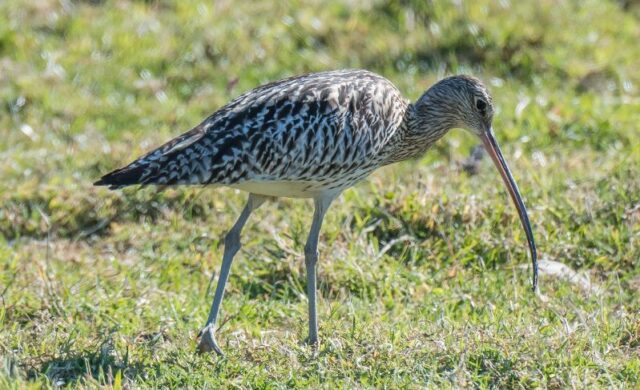Ambitious targets have been set for forest expansion across the UK which will provide opportunities for woodland birds but could also pose threats for species reliant on open habitats. The key will be putting the right trees in the right place and to this end The Forestry Commission, working with the British Trust for Ornithology, Natural England and others, is developing a new toolkit to ensure this is the case.
Breeding waders, such as the Curlew and Lapwing, which are reliant on open habitats, that is not wooded, during the breeding season are high profile species of conservation concern because of their declining populations and the international significance of some of their UK populations.
The Forestry Commission are working with the British Trust for Ornithology, Natural England and others to produce tools which will identify important areas for the recovery of breeding waders based on scientific modelling of Bird Atlas and environmental data sets. These models will be validated over the coming months with bird surveying funded by the Forestry Commission in northern England to fine tune the final outputs. The models will then be used to develop wader maps to guide and inform woodland expansion that works with breeding wader conservation.
John Calladine, Senior Research Ecologist at the BTO, said, “Delivering the benefits of reforestation while minimising adverse impacts on breeding waders requires accessible information on their distribution. This would allow woodland expansion to be targeted away from key wader areas.”
He added, ” As well as guiding decisions about where to plant trees, the wader maps also yield insights into the relative importance of different regions, landscapes, protected areas, habitats and land uses for breeding waders. This information can also be used to inform decisions about where efforts to achieve sustainable and long-term solutions for wader conservation should be focused. We are indebted to our dedicated volunteers who collect the raw data on bird distribution without which the development of tools such as this would not be possible. ”
Neil Riddle, a Principal Adviser at the Forestry Commission, said “In 2019 the Government made a manifesto commitment to plant up to 30,000 hectares of trees per year, across the UK, by 2025. Woodland expansion is one of the most important, large-scale changes in land use that can provide conservation and wider environmental benefits and must be well sited and designed to avoid adversely affecting populations of breeding waders.”
Sarah Anthony, Natural England, said “Natural England welcomes and supports the BTO’s modelling work. The development of these wader sensitivity maps will form an important part of a wider toolkit to guide decision-making on afforestation proposals. A strategic approach at a broad spatial scale is vital to understand the impacts and to identify the best opportunities for both biodiversity and woodland expansion.”
This ambitious project is a partnership between the British Trust for Ornithology, Scottish Forestry, Forestry Commission, the Cairngorms National Park Authority (CNPA) and Working for Waders.




